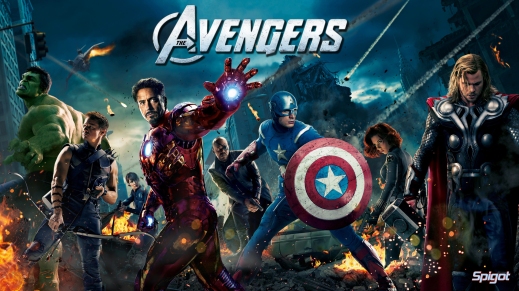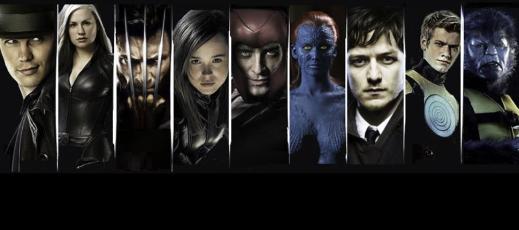Originally posted at The Nerds of Color
As of April 2013, The Avengers had grossed more than $600 million dollars in the US, a box office performance that has nearly tripled its (already bloated) production budget. It would be fair to say that if you’re a Hollywood movie producer, The Avengers makes you very, very, very happy. In fact, you’re hoping to make as many Avengers franchises as you possibly can.
Against this backdrop of undeniable success, it seems major Hollywood production companies are hoping to do just that. For the last few months, the Internet has been a-buzz with casting rumours for Man of Steel 2: first with news that Ben Affleck was being tapped to play an aging Batman, and last week with the announcement that virtually unknown actress Gal Gadot (of Fast and Furious franchise fame) was assuming the mantle of Wonder Woman. Although fans have long clamoured for a live-action Justice League adaptation, the fact that all three members of the heralded DC Trinity will be making an appearance in Man of Steel 2 — a movie that we all expected would be just another Superman solo vehicle — is clear indication that WB/DC has drawn inspiration from the Marvel Cinematic Universe, and is looking to fast-track the Justice League movie by rapidly introducing other characters to the silver screen. Fans have since speculated that while Gadot might make a minimal cameo in Man of Steel 2, it’s likely that she will subsequently headline her own Wonder Woman movie that would further stoke the fires for a full Justice League film.
Not to be out-done, Twentieth Century Fox is also applying The Avengers model to its Marvel comic properties — Fantastic Four and X-Men — which had thus far been problematically excluded from the Avengers universe because the Marvel Cinematic Universe is masterminded through Disney/Marvel Studios, not Fox. However, two days ago, Comics Alliance broke news (via Hollywood Reporter) that Simon Kinberg, writer of X-Men: Days of Future Past and several other major action films, was being hired by Fox to integrate the Fantastic Four and X-Men universes. In the interview, Kinberg explicitly noted that the inspiration for this step came out of a desire to emulate Marvel Studios. Says Kinberg:
I have a lot of ideas on how to built those brands and do what everybody is thinking of these days: Be like Marvel. I want to be able to build stories over multiple movies.
This is a fanboy’s wet-dream.
Although it hadn’t been tried before on the big screen, the Avengers’ model is actually nothing new to fanboys and fangirls; it’s a large-scale version of comic serial marketing that has been used by comic publishing houses for decades to sell single issue comics to readers. Regular comic readers are conditioned to the idea that we should show up weekly at our local comic book story to spend $4 a book to follow a story doled out to us piecemeal. They have trained us to anticipate story arcs spread over six or eight 22-page issues, or even title-spanning maxiseries events, and to adjust our spending accordingly. They expect us to purchase titles involving heroes (or creative teams) we’re otherwise not interested in whenever a major crossover event — like DC’s Blackest Night or Marvel’s Fear Itself — is launched; otherwise, we won’t be able to follow what’s happening in the books we care about. They facilitate this additional spending by publishing reading lists at the back of each crossover book that tells us the other titles we need to buy. They reward us for our spending by dropping easter eggs into the writing that can only be understood if you decided to collect all the peripheral titles to the main story arc — a phenomenon fanboys have come to prize in the form of “continuity” (where the alpha fanboy is the one who has the best and most obscure knowledge of these details). And they warn us that if we fall behind on our weekly comic purchases, we won’t get “the full story.”
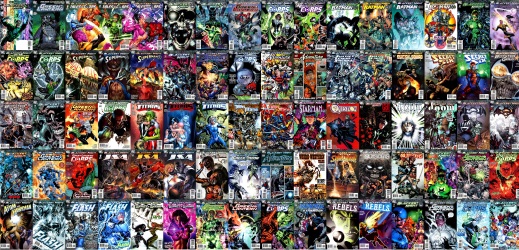
It’s a solid money-making scheme: it traps the comic book consumer into a cyclical spending schedule, which means guaranteed monthly profit for comics publishing houses (and any middlemen involved). It’s no surprise, therefore, that industry-spanning comic events are now the norm in mainstream comics, and that publishing houses largely discourage reading books in graphic novel form (by collecting books only months after the initial story launch). It makes money.
It’s also not surprising that this same model has found a home in the cinematic universes. In The Avengers franchise — which includes the major Avengers films as well as subsidiary properties currently including Thor, Captain America, and Iron Man — Marvel Studios is churning out movies at regular intervals, spooning out just a little bit of their larger story at a time. With every Thor movie, we’re momentarily satiated by receiving an additional piece of the maxiseries puzzle, but we’re also tantalized with another mid-credit teaser for the “next big thing.” And so we come back demanding more. Like crackheads.
Now, don’t get it twisted: I’m not an abject hater of the Marvel Cinematic Universe. I appreciate the ambition it takes to create an integrated cinematic franchise, and Marvel Studios should also receive kudos for “mainstreaming” the live-action superhero genre.

Marvel Studios has proven that capes-and-cowls can be wildly, unbelievably profitable. And, after all, they’re in this to make money.
But, there are a few drawbacks to The Avengers model; drawbacks inherent to the maxiseries strategy that are being swept under the rug by WB/DC and Twentieth Century Fox in their own ambitions to replicate The Avengers.
One major sacrifice will be in story-telling complexity and sophistication. In comics, maxiseries stories told piecemeal through multiple single-issue comics that span different titles often involve coordination from distinct creative teams; the same is true in the Marvel Cinematic Universe. This kind of integrated storytelling can create a large narrative spectacle that involves multiple titles within a given publishing house — indeed that’s the point — but being a broad story doesn’t guarantee a complex or sophisticated story. A single creative team writing a book, or an ongoing title, can control every aspect of the story to add complexity, maybe by employing plot foreshadowing, subtle evolutions in character speaking style, or specific narrative devices to add evolutionary layers to a story over time; these details are lost when multiple creative teams are working on pieces of a larger product.
Similarly, in film, we were treated to a crescendoeing story in the Nolanverse Trilogy, wherein each subsequent chapter not only built upon the plot of its predecessor(s), but also in themes, visual style, and character evolution.
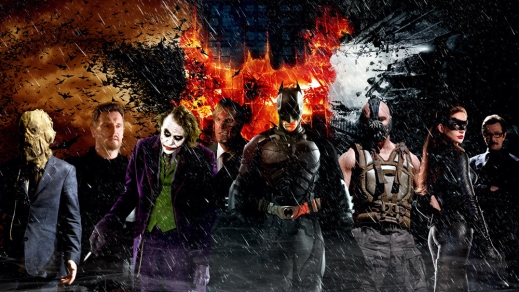 Taken as a whole, we can see how Nolan seeded ideas in Batman Begins (unrelated to plot) that bore fruit in the final chapter of the Trilogy. This was facilitated by the fact that Nolan started with a specific three-part vision, and was involved in the production of each component film to allow that vision to translate faithfully.
Taken as a whole, we can see how Nolan seeded ideas in Batman Begins (unrelated to plot) that bore fruit in the final chapter of the Trilogy. This was facilitated by the fact that Nolan started with a specific three-part vision, and was involved in the production of each component film to allow that vision to translate faithfully.
But, with a maxiseries where separate creative teams are responsible for individual pieces but not the larger whole, cohesion is achieved primarily through crossover plot points, rather than strong purposeful writing spanning the whole series. Consequently, the finished product is less complex in the way of The Watchmen, and more complex in the way of Days of Our Lives. Indeed, we can see this example in The Avengers model: the first Avengers movie was flashy and involved several beloved characters. But the overarching “Phase I” Avengers maxiseries story arc wasn’t actually complex: a bunch of superheroes and villains are introduced, and they come together to chase a cosmic MacGuffin and blowing things up in the process. The Thor you get in Thor is the same hammer-wielding Thor you get in The Avengers. Nolanverse, this is not. In the Avengers model, the superhero movie is quite literally a motion comic.
Additionally, the maxiseries model re-purposes specific issues of its component titles: they are no longer stand-alone titles trying to tell the independent story of, let’s say, Deadman. Instead, the participating issues serve as optionally modular chapters that exist primarily to communicate some peripheral detail about the events of Trinity War. Functionally, this removes any real pressure from component stories to be independently strongly written: comic readers will buy the book anyways if they hope to understand the maxiseries, even if the plot details have been essentially shoe-horned in. We see this problem even with collecting an arc over single issues — maxiseries or not; in a six-issue story arc of any given title, not all issues have to be individually all that strong.
Applied to movies, this permits certain properties within The Avengers franchise to be weak, and still sell in order to advance the plot. The Avengers model of superhero movie-making doesn’t require a viewer to have seen the preceding installments in Iron Man, Captain America, or Thor, but it sure as heck helps to understand the plot (particularly if you are a part of that much coveted cross-over audience with limited pre-existing comics knowledge that this whole cinematic universe is hoping to appeal to): Iron Man 1 & 2 introduced Nick Fury and S.H.I.E.L.D.; Thor introduced Loki; Captain America introduced the Cosmic Cube. All three were central to the story of The Avengers. Yet, of the three films, only one — Iron Man — has received near unanimous critical acclaim.

By some critical accounts, Thor and Captain America were terrible movies. (Update: An earlier version of this post neglected to mention that Captain America was enjoyed by many viewers and critics, and earned a positive 73% rating on Rotten Tomatoes, although critics like Richard Roeper disliked it citing problems with crossover appeal. Personally, I agree with the latter.)
But, don’t be surprised: by The Avengers model, they don’t have to be objectively good movies; they only have to introduce their respective plot devices (which they did in spades). And so, Thor and Captain America aren’t really superhero films that push the boundaries of the live-action superhero genre: they are really just chapters in The Avengers franchise that serve the same function as comic book backstory — plot-wise “important,” but not necessarily artistically “good.”
Perhaps the biggest problem with The Avengers model — and the decision by WB/DC and Twentieth Century Fox to emulate it — is that it homogenizes the superhero live-action movie.
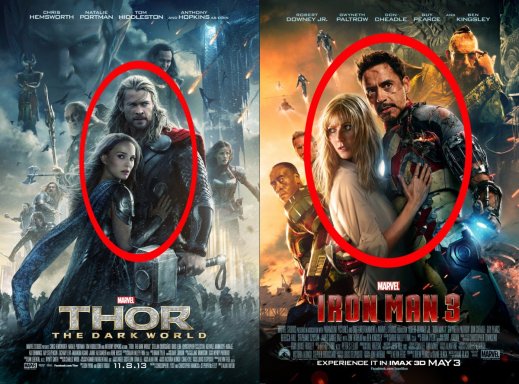
As I wrote at the start of this post, no one can deny the overwhelming money-making success of The Avengers model. And, no one can deny the value of simple stories punctuated with large explosions. The Avengers style of superhero movie-making draws upon the simple, child-like joy of comics that attracts young and adult readers of the genre, and does so ably. It’s sheer popcorn-popping fun.
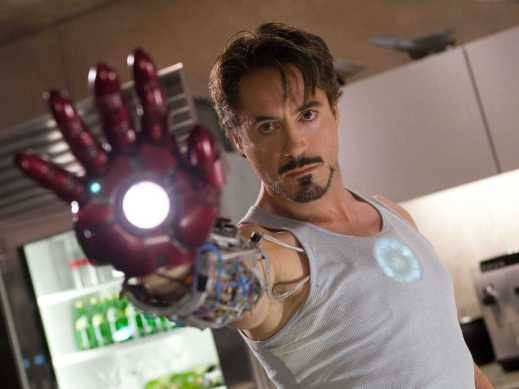
But, comics are not just this kind of youthful joie de vivre. Comics — even superhero comics — have evolved over the years into a broad artistic medium that also includes deep and insightful explorations of the human condition, resulting in some books that take on darker and grittier overtones. Comics, as an art form, distinguishes itself in the freedom it offers creators to push artistic boundaries. There is great potential in adapting comics to the live-action medium to allow artists to push the creative boundaries of both genres.
Indeed, in the decade prior to The Avengers, we were treated to a diverse range of superhero movies, all notable for offering very different perspectives on the superhero notion. Some, like the Nolanverse Batman trilogy, have worked. Others, like Ang Lee’s Hulk, have not (although I actually thought the film only failed due to bad CGI, not story).

Both efforts were possible only when creative teams were given the freedom to experiment, sometimes profoundly: Christopher Nolan envisioned a finite Batman trilogy set in a world without superheroes, and Ang Lee’s Hulk was more slow and methodical character study than high-octane superhero film.
Neither movie would have been made if either Christopher Nolan or Ang Lee had been required to maintain stylistic cohesion with a larger franchise, or been constrained to certain plot devices to integrate the story into a larger cinematic universe. Christpher Nolan could not possibly have written a trilogy that ends with Batman giving up the cowl. Ang Lee couldn’t possibly have created the psychological study of his Hulk. Properties that don’t offer immediate team-up or crossover possibilities — Ghost Rider, Jonah Hex, Blade, Swamp Thing — are also less likely to be made. In short, with Big Hollywood embracing a single strategy for telling superhero stories on-screen, we can bid farewell to Hollywood allowing directors to explore the superhero genre with creativity and distinctiveness. Instead, we can expect a lot of the same kind of superhero movie: bright colours, big explosions, witty banter, and a lot of effort spent on crossover continuity.
Bottom line, I’m not knocking The Avengers, or the folks who like the franchise. But, I’m also not the target demographic of The Avengers. I like my superhero movies like I like my superhero comics: distinctive, thought-provoking, and above all, artistically different from one another.
There should be room in Hollywood for all kinds of superhero movie. Right now, there isn’t.
